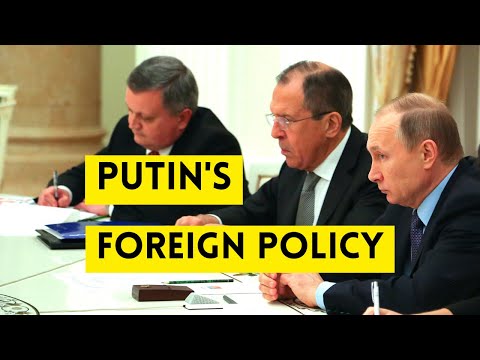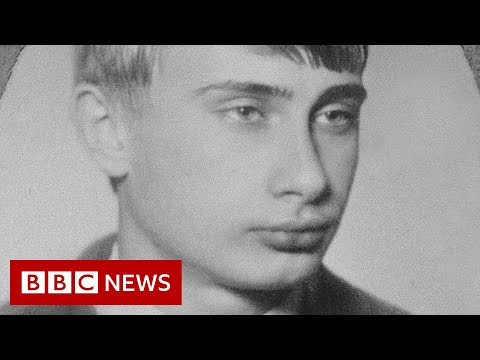How has Putin’s leadership affected Russia’s transportation infrastructure?
Have you ever wondered how Vladimir Putin’s leadership has impacted Russia’s transportation infrastructure? As an authority on the subject, I can tell you that Putin’s leadership has had a significant influence on the development and modernization of transportation systems in Russia. Let’s dive into the details and explore how Putin’s leadership has shaped Russia’s transportation infrastructure in recent years.
**1. Investment in Infrastructure:** Under Putin’s leadership, Russia has seen a substantial increase in investment in transportation infrastructure. The government has allocated significant funds towards the construction and renovation of roads, bridges, railways, and airports across the country. This investment has helped improve connectivity and accessibility for both urban and rural areas in Russia.
**2. Focus on Modernization:** Putin has placed a strong emphasis on modernizing Russia’s transportation infrastructure to meet the growing demands of the population. This includes the introduction of high-speed trains, the expansion of metro systems in major cities, and the adoption of new technologies to improve efficiency and safety in transportation networks.
**3. International Connectivity:** Putin’s leadership has also focused on enhancing Russia’s connectivity with other countries through transportation infrastructure. The construction of new highways and railways linking Russia to Europe and Asia has strengthened trade and tourism relations with neighboring countries, further boosting economic growth and development.
**4. Arctic Expansion:** Putin has prioritized the development of transportation infrastructure in the Arctic region to capitalize on its strategic importance. The construction of new ports and shipping lanes in the Arctic Ocean has opened up new opportunities for trade and transportation, positioning Russia as a key player in the region.
**5. Challenges and Criticisms:** Despite the progress made in improving transportation infrastructure under Putin’s leadership, there have been challenges and criticisms along the way. Some critics argue that the government’s focus on large-scale projects has led to delays, cost overruns, and corruption in the construction sector.
**6. Future Prospects:** Looking ahead, Putin’s leadership is likely to continue shaping Russia’s transportation infrastructure in the coming years. The government has outlined ambitious plans for the development of new transportation projects, including the construction of high-speed rail networks and the expansion of air travel infrastructure to meet the growing needs of the population.
In conclusion, Vladimir Putin’s leadership has had a profound impact on Russia’s transportation infrastructure, with significant investments in modernization, international connectivity, and Arctic expansion. While there have been challenges and criticisms, the overall trajectory of development under Putin’s leadership points towards a more connected and efficient transportation network in Russia’s future.
The Putin Effect: A Deep Dive into How Russia’s President Has Shaped the Economy
How has Putin’s leadership affected Russia’s transportation infrastructure?
– **Investment in Infrastructure**: Under Putin’s leadership, Russia has seen a significant increase in investment in its transportation infrastructure. This includes the construction of new roads, bridges, airports, and railways to improve connectivity across the country. The government has allocated substantial funds to modernize and expand the transportation network, which has led to improved efficiency and reduced travel times for both goods and passengers.
– **Focus on High-Speed Rail**: Putin has placed a strong emphasis on developing high-speed rail networks in Russia to enhance connectivity between major cities. Projects such as the Moscow-Kazan high-speed railway aim to reduce travel time and boost economic growth in the regions they serve. By investing in cutting-edge transportation technology, Putin hopes to position Russia as a global leader in high-speed rail travel.
– **Integration with Global Markets**: Putin’s policies have also focused on integrating Russia’s transportation infrastructure with global markets. This includes improving port facilities to streamline the export of goods and enhance trade partnerships with other countries. By investing in modernizing transportation hubs, Russia aims to increase its competitiveness on the international stage and attract foreign investment.
– **Challenges and Criticisms**: Despite the progress made in enhancing Russia’s transportation infrastructure, there have been challenges and criticisms. Some critics argue that the focus on high-speed rail projects has come at the expense of maintaining and upgrading existing transportation networks. Additionally, corruption and inefficiency in the construction sector have hindered the timely completion of infrastructure projects, leading to delays and cost overruns.
In conclusion, Putin’s leadership has had a significant impact on Russia’s transportation infrastructure, with investments in modernization, high-speed rail, and global integration. While there have been challenges along the way, the overall goal is to improve connectivity, efficiency, and competitiveness in the transportation sector. As Russia continues to develop its infrastructure under Putin’s leadership, it is essential to address issues such as corruption and inefficiency to ensure the successful implementation of transportation projects.
Navigating Russia’s Extensive Transportation Infrastructure: A Comprehensive Overview
**Navigating Russia’s Extensive Transportation Infrastructure: A Comprehensive Overview**
Have you ever wondered how Putin’s leadership has affected Russia’s transportation infrastructure? Let’s delve into this complex topic and explore the key aspects that shape the country’s vast network of roads, railways, and waterways. From modernization efforts to geopolitical implications, there is much to uncover in the realm of Russian transportation.
1. **Modernization Efforts:** Under Putin’s leadership, Russia has invested heavily in upgrading its transportation infrastructure to meet the demands of a growing economy. Projects such as the construction of new highways, high-speed railways, and modernization of airports have been prioritized to improve connectivity within the country and beyond. These efforts aim to boost economic development and enhance the overall efficiency of transportation networks.
2. **Geopolitical Implications:** Russia’s transportation infrastructure plays a crucial role in shaping geopolitical dynamics in the region. The country’s extensive network of railways and pipelines not only connects major cities but also extends into neighboring countries, influencing trade routes and energy exports. Putin’s focus on strengthening Russia’s transportation links is seen as a strategic move to assert the country’s influence on the global stage.
In conclusion, Putin’s leadership has had a significant impact on Russia’s transportation infrastructure, shaping its development and influencing geopolitical relationships. By understanding the complexities of this vast network, we can gain valuable insights into the country’s economic, social, and political landscape. As Russia continues to modernize and expand its transportation systems, the implications of these efforts will be felt both domestically and internationally.
Exploring Russia’s Well-Developed Infrastructure: A Closer Look at a Region’s Progress
How has Putin’s leadership affected Russia’s transportation infrastructure? Let’s take a closer look at the progress made in this region.
1. **Investment in Modernization:** Under Putin’s leadership, Russia has seen significant investment in modernizing its transportation infrastructure. This includes the development of new highways, railways, airports, and ports to improve connectivity within the country and with other regions.
2. **Focus on High-Speed Rail:** One of the key areas of focus has been the development of high-speed rail networks in Russia. Projects such as the Moscow-Kazan high-speed railway aim to reduce travel times and increase efficiency in transportation across the country.
3. **Upgrades to Airports:** Putin’s administration has also prioritized upgrades to airports across Russia to accommodate the growing number of passengers and improve overall air travel experience. This includes expanding existing airports and building new ones in key regions.
4. **Enhanced Connectivity:** The overall goal of these infrastructure improvements is to enhance connectivity within Russia and with neighboring countries. This not only promotes economic growth but also strengthens diplomatic ties and cultural exchanges.
5. **Challenges and Future Plans:** While progress has been made, there are still challenges to overcome, such as funding constraints and logistical issues. However, the Russian government continues to push forward with ambitious plans for further infrastructure development in the coming years.
In conclusion, Putin’s leadership has had a significant impact on Russia’s transportation infrastructure, with investments in modernization, high-speed rail, airport upgrades, and enhanced connectivity. Despite challenges, the country is moving towards a more efficient and interconnected transportation network that will benefit both its citizens and the broader region.
**Frequently Asked Questions:**
– **How has Putin’s leadership impacted Russia’s transportation infrastructure?**
– **What are some of the major transportation projects initiated under Putin’s rule?**
– **Has Russia’s transportation system improved or deteriorated during Putin’s tenure?**
In conclusion, Putin’s leadership has had a significant impact on Russia’s transportation infrastructure. Through various initiatives and investments, the country has seen improvements in its roadways, railways, airports, and ports. Despite some challenges and criticisms, it is evident that Putin’s focus on infrastructure development has played a crucial role in shaping Russia’s transportation network. As the country continues to grow and modernize, it is essential to evaluate the long-term effects of these changes on the overall efficiency and accessibility of Russia’s transportation system.


